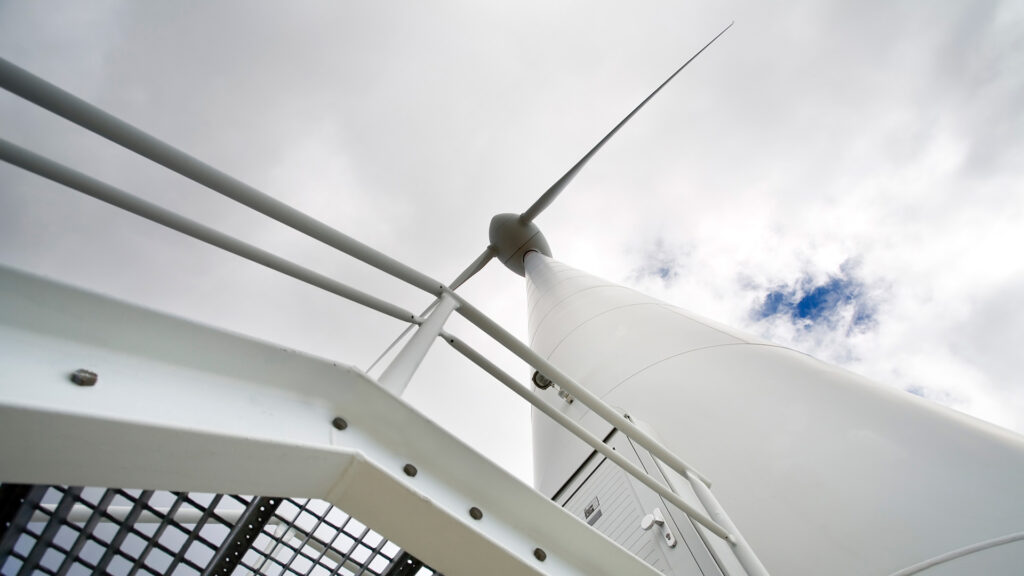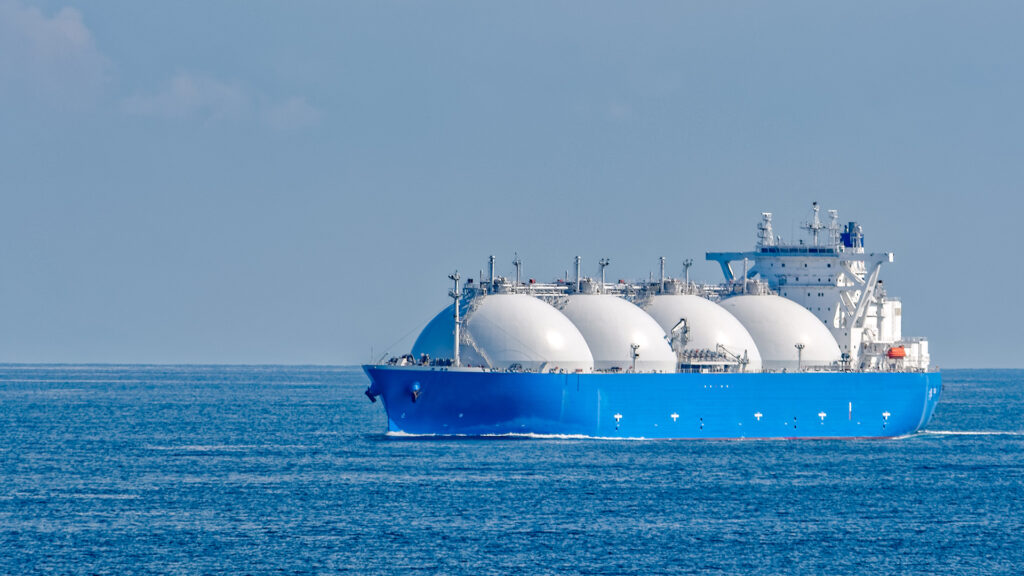
Transforming Britain into a global clean energy superpower: what is Labour’s plan?
The new Labour government has announced an ambitious energy transition program with first year policies aiming to deliver a zero-carbon electricity system by 2030. Labour intends to show climate leadership by quadrupling offshore wind generation by 2030, pioneering at least 5GW of floating offshore wind projects, tripling solar power, and doubling onshore wind capacity. This is in addition to investing in carbon capture and storage and doubling the government’s target on green hydrogen.
Labour’s energy transition ambitions are underpinned by four primary policy initiatives which all have significant implications for Britain’s energy industry. These are first the establishment of GB Energy, second the new National Wealth Fund, third reducing access queueing and improving strategic planning of the energy system, and fourth overturning the ban on onshore wind.
This briefing unpacks each of the policy initiatives, while acknowledging that some policies are currently light on detail. To the extent possible, the briefing also draws out issues that players in the UK energy industry should be aware of.
Establishment of GB Energy
Labour intends to establish GB Energy – a new public energy company that will invest in clean energy technologies. Labour has pledged that GB Energy will be based in Scotland. The Energy Independence Bill that was announced in the King’s Speech on 17 July 20241 will be the legislative vehicle that will establish GB Energy.
Items of investment by GB Energy will be prioritised in three key areas:
- The highest priority area for investment by GB Energy is leading-edge energy technologies. The intention behind this is to demonstrate that these technologies are viable, thereby de-risking and increasing private sector investment. Technologies that Labour has identified for investment by GB Energy include green hydrogen, tidal energy, and floating offshore wind.2
- The second priority area is co-investment in established energy technologies. To be eligible for investment, established technologies must demonstrate that GB Energy investment will complement private investment and speed up the roll out of that technology. An example of this that Labour has identified is the expansion of wind farms on the public estate.3 The government moved quickly on this second priority and announced on 25 July that GB Energy will partner with the Crown Estate to accelerate the construction of new offshore wind farms on the seabed owned by the royal family.4 The Crown Estate estimates this partnership will lead to up to 20-30GW of new offshore wind developments.5
- The third priority will be to partner with energy companies, local governments, and communities on renewable energy projects. This partnership will involve shared public/private ownership of projects and funding small-to-medium scale clean energy projects, such as onshore wind and community solar projects.6 This goes hand in hand with the proposed ‘Local Power Plan’ which will provide funding to local authorities and low-interest loans for communities for stand-alone projects such as rooftop solar on social housing and solar farms.7
From a reading of the Labour policies and subsequent commentary the intended benefits of GB Energy are threefold:
- It can potentially help decrease the otherwise significant upfront costs of renewable energy projects that tend to rely on debt-financing.
- It may help to get energy technologies off the ground that the private sector previously viewed as too nascent or risky for investment.
- Unlike the private sector, GB Energy can take a more long-term, strategic view on which renewable energy projects to support, and which will help achieve Britain’s energy needs and climate goals.
So far, the response to GB Energy from the energy sector has been muted which some commentators are attributing to the lack of detail on the implementation of the various initiatives.8 Participants in the energy industry who are considering a partnership with GB Energy may want to look out for stakeholder consultation that Labour plans on holding to help shape the purpose and remit of GB Energy. The government has yet to announce further details of when these consultations will take place.
Establishment of a National Wealth Fund to invest in the energy transition
The National Wealth Fund will be a new strategic body that will invest public money in energy transition projects. Labour is seeking to invest £1.8bn in port infrastructure, £1.5bn for gigafactories (including for electric vehicles), £2.5bn for clean steel, £1bn for carbon capture, and £500m for green hydrogen. This National Wealth Fund is to be established “immediately” and the government intends to spend the allocated £7bn within 5 years.9
Investment in port infrastructure is particularly relevant to HFW’s extensive expertise in ports and terminals and offshore wind. This is also because investment in ports is intended to make them ready for the deployment of renewables and competitive in the decommissioning market. Labour has announced the initial port locations which it intends to invest in, including Belfast Harbour, the East Anglia renewable cluster, Solent renewable cluster, and the Celtic Sea renewable cluster. It has also announced more general areas that it is considering for ports investment, including Forth and Tay, North East Scotland, North West and North Wales, and North East England.10
The specific nature of the investment in ports remains unclear for now. However, further detail on the National Wealth Fund will be set out ahead of the government’s international investment summit later in the year.11
As with GB Energy, specific details regarding investment in carbon capture and storage, electric vehicle battery plants, and green hydrogen manufacturing are limited at this stage and remain “subject to commercial negotiation”.12
Overcoming access queueing and strategic planning of transmission systems
The new government acknowledges that there are currently obstacles preventing a smooth transition to cleaner energy sources, including a lack of transmission capacity, out-of-date planning frameworks, and a long queue for grid connections. In fact, a recent Environmental Audit Committee report found that the queue has more than twice the amount of energy generation in it than is needed for a 2035 decarbonised energy system target.13
The new government has provided some specific targets to overcome the current obstacles in connecting to the grid. This includes the introduction of targets specifying timeframes within which decision makers must consider renewable project proposals. While the nature of these targets is currently vague, Labour’s policy documents suggest a reduction ‘from years to months’. A designated directorate will monitor the timeliness of decisions on renewable energy proposals. This is intended to ensure that ‘departments and statutory consultees remain on track’.14
Labour also proposes to establish a Future Systems Operator (FSO) that will act as a ‘system architect’ with a coordinating role. The FSO is proposed to “develop regional system plans and local area energy plans which link local, regional, and national infrastructure, take account of characteristics of a given area, and ensure that local communities have a say in the energy decisions that affect them”.15 Currently, further details are unavailable regarding the strategic planning role that the FSO will play and how precisely it will assist with improving the strategic planning of the transmission system and access to the grid. We will provide a further update when more details emerge.
Labour also intends to reform the planning system by updating the National Planning Policy Statements (NPPS) and Nationally Significant Infrastructure Projects, including an initiative to overturn the ban on onshore wind in England.
Overturn ban on onshore wind in England
Within less than a week of winning the general election, Labour moved to lift the ban on onshore wind. Labour’s new National Planning Policy Framework (NPPF) removes two footnotes that effectively prevented the approval of any onshore wind projects – the NPPF footnotes required no local opposition to a proposed onshore wind project. Labour alleges that this ban resulted in 7GW of lost capacity since 2015.16 The change to the NPPF took effect on 8 July 202417 and is critical to Labour’s pledge to double onshore wind capacity by 2030.
Several large energy companies, including RWE, RES Group, EDF Renewables, Coriolis Energy, Ridge Energy, and Octopus Energy18 have publicly announced that they are now considering onshore wind projects following the lifting of the ban. This will, however, be unlikely to result in a flood of new onshore wind projects whilst issues of slow grid connections and lack of transmission capacity remain. It is important that Labour’s energy transition policies move in tandem with each other. Otherwise, initiatives like overturning the ban on onshore wind will unlikely boost the UK’s clean energy capacity, because of difficulties in feeding the energy to the grid. Energy companies considering onshore wind projects should actively follow policy and legislative changes that address these issues.
Relevantly to this, Labour has also announced that it is considering designating large wind farms as nationally significant infrastructure projects (NSIPs), which would result in the energy secretary signing off on proposals, rather than local councils.19 This change would require amendment of the Planning Act 2008 and is hoped to streamline the consent process. It would also signal a return to the approvals process that existed prior to the 2015, which is when local governments were first given decision making powers on onshore wind farms.
Whilst the Planning Inspectorate states that from accepting an NSIP application to making a decision, the process should last around 16 months20, the government has found that the timeframe was on average 4.2 years in 2021.21 While this is not particularly encouraging, other commentators will point to the fact “In the 10 years prior to 2015, England was building an average capacity of 180 MW from onshore wind per year, post 2015 this reduced to just under 1 MW per year, with only 17 onshore wind farms receiving planning permission”22 Therefore while designating large windfarms as NSIPs is a beneficial first step, further work is required to reduce approval timeframes, so that an increasing number of wind farms can contribute to the UK’s clean energy mix.
Developers may also want to follow if, and how, the new government implements the National Infrastructure Commission’s recommendations23 for improving the NSIP framework. A particularly relevant recommendation is that there should be a framework of direct benefits for local communities and individuals that host NSIPs. The former government produced guidance on benefits in late 202324, however, the guidance is voluntary. It remains to be seen if the new government implements any mandatory benefits requirements such as bill discounts, for example.
Key takeaways for the energy industry
Finally, note that Labour’s plan to become a global clean energy superpower does not mean an immediate shift away from traditional fossil fuels. Labour has confirmed that North Sea oil and gas production will continue to contribute to the UK’s energy mix “for decades to come,” and that it aims to transition away from fossil fuels in a “phased and responsible” manner.25
Labour’s policy initiatives, such as GB Energy, show a strong desire for partnerships with the private sector. Such partnerships will require players in the energy industry to consider contractual arrangements, private vs public risk allocation, and intellectual property rights.
The energy industry should remain on alert for announcements and further policy details in the following areas:
- stakeholder consultations on the role and purpose of GB Energy;
- operation of the National Wealth Fund, including the distribution of funding between ports infrastructure, green hydrogen, electric vehicle manufacturing, and carbon capture technology;
- reduced queuing times for grid access and investment in strategic transmission roll outs;
- possible inclusion of onshore wind projects as NSIPs; and
- recommendations for improving the NSIP framework, particularly around the provision of community benefits.
Footnotes:
- The King’s Speech 2024 – GOV.UK (www.gov.uk)
- Make-Britain-a-Clean-Energy-Superpower (labour.org.uk), p 11.
- ibid, p 12.
- Offshore wind to power 20m homes within five years, Starmer to pledge | Energy | The Guardian
- New Great British Energy partnership launched to turbocharge energy independence – GOV.UK (www.gov.uk)
- Make-Britain-a-Clean-Energy-Superpower (labour.org.uk), p 12.
- ibid, p 13.
- Labour promised a state-owned energy company. Can it work? – POLITICO
- Boost for new National Wealth Fund to unlock private investment – GOV.UK (www.gov.uk)
- Make-Britain-a-Clean-Energy-Superpower (labour.org.uk)
- Boost for new National Wealth Fund to unlock private investment – GOV.UK (www.gov.uk)
- Make-Britain-a-Clean-Energy-Superpower (labour.org.uk)
- Enabling sustainable electrification of the UK economy (parliament.uk)
- Make-Britain-a-Clean-Energy-Superpower (labour.org.uk), p 8.
- ibid., p 9.
- ibid, p 2.
- Policy statement on onshore wind – GOV.UK (www.gov.uk)
- Octopus among firms eyeing onshore wind farms after ban lifted (energyvoice.com)
- House of Commons Library briefing paper, Planning for Nationally Significant Infrastructure Projects, CBP 6881, July 2017
- Planning Inspectorate, Frequently asked questions, FAQ10
- Nationally Significant Infrastructure: action plan for reforms to the planning process – GOV.UK (www.gov.uk)
- Planning for net zero and nature: A better, greener planning system that empowers local places | IPPR, p 17.
- Government response to the National Infrastructure Commission’s report on Delivering net zero, climate resilience and growth: improving nationally significant infrastructure planning – GOV.UK (www.gov.uk)
- Transmission Acceleration Action Plan: Government response to the Electricity Networks Commissioner’s report on accelerating electricity transmission network build (publishing.service.gov.uk)
- Change Labour Party Manifesto 2024

Download a PDF version of ‘Transforming Britain into a global clean energy superpower: what is Labour’s plan?’











